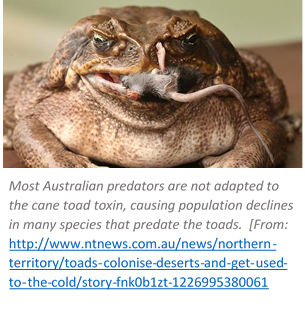Species extinctions are occurring at rates of up to 1,000 times that of natural levels, owing to habitat fragmentation, pollution, climate change, introduction of alien species and numerous other drivers.
In her recent talk, Fiona Plenderleith discussed one threat in particular; globally warming climates causing species range shifts. This is the idea that as the Earth warms, due to the effects of increased greenhouse gas emissions, the normal habitat range of a species becomes unsuitable. Species caught in this predicament face three choices: move, adapt, or die. Evidence of adaptability is sparse with only a few species, such as the European larger banded snail (Cepaea nemoralis), clearly displaying such capabilities. Therefore, in order to avoid extinction, species must move to different latitudes to cope with the changing climate. Fiona addresses the proposal that assisted colonisation could be used as a method of conservation for those species unable to keep up with the rate of change.

Firstly, the talk discussed how assisted colonisation is a very high risk strategy due to its range of possible negative implications. One such issue is the competitive displacement of native species by introduced species. This occurs when the introduced species occupies the same niche as the native, but is better adapted to exploit its resources, therefore excluding the native species and causing its population to decline. Further risks include the transfer of diseases, as classically exemplified by the grey squirrel’s introduction of the parapoxvirus, and hybridisation of rare endemics.
Fiona then reminded us all of the classic “conservation gone wrong” case in which the *** cane toad (Rhinella marina) was introduced to Australia as a pest control strategy. This demonstrated how we are only able to truly assess the adverse effects of species introductions after the action has been performed. Therefore, we must be extremely cautious with assisted colonisation of species in order to avoid any unforeseen consequences to the adopted environment.
Hoegh-Guldberg et al. suggest that intracontinental translocation can resolve the aforementioned issues. This appears somewhat logical as the ecosystem similarities within a continent may help prevent disruptions. However, the introduction of a mysid shrimp to Flathead Lake, Montana demonstrated that this too can have disastrous consequences. This effort to supplement the diet of kokanee salmon actually led to their stock collapse, due to the shrimp’s heavy predation of zooplankton. Thus we again see that even with the best intentions species introductions frequently lead to catastrophic effects on the new environment.
Advocates of assisted colonisation propose that translocated species may have the ability to restore ecosystem functions in damaged environments. In the case of the extinct Pinta Island tortoise (Chelonoidis nigra abingdonii), it has been suggested that introducing a different species of giant tortoise will help to fill the vacant niche and therefore restore the seed dispersal mechanism that was lost. However, there is still a poor understanding globally of ecosystem functions and such introductions are surrounded with uncertainty.
In summary, previous conservation efforts involving the introduction of a new species have often proven disastrous, with irreversible consequences. Thus, to avoid a repetition of such cases, assisted colonisation is not the solution to warming habitats. Fiona suggests that rather than wasting finite conservation funds on such a risky and uncertain endeavour, we should instead focus our efforts on restoration of lost habitats or tackling the issue of climate change itself.
By Peter Foster


Reblogged this on Biodiversity in Scotland: Primary Schools.
LikeLike